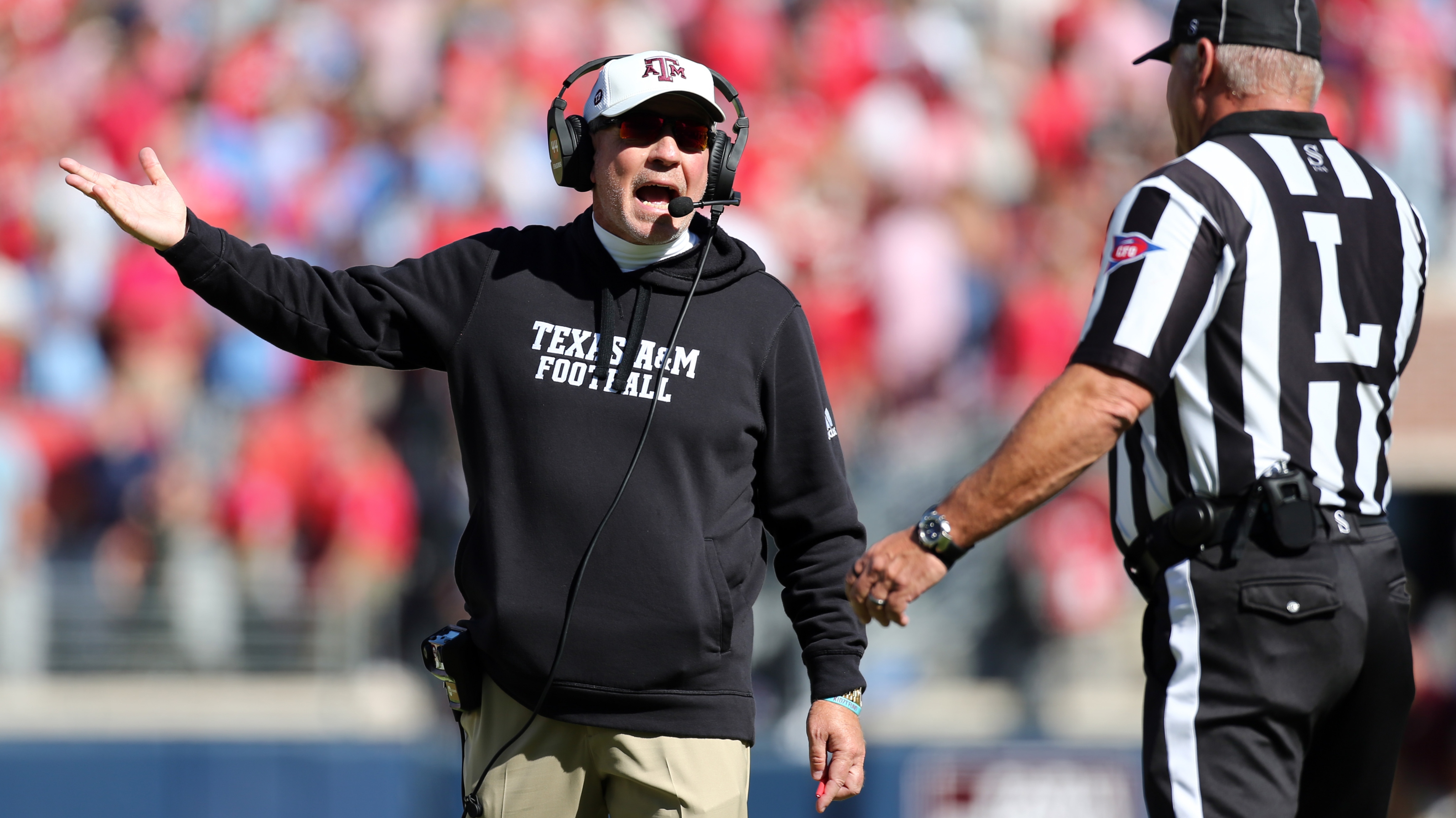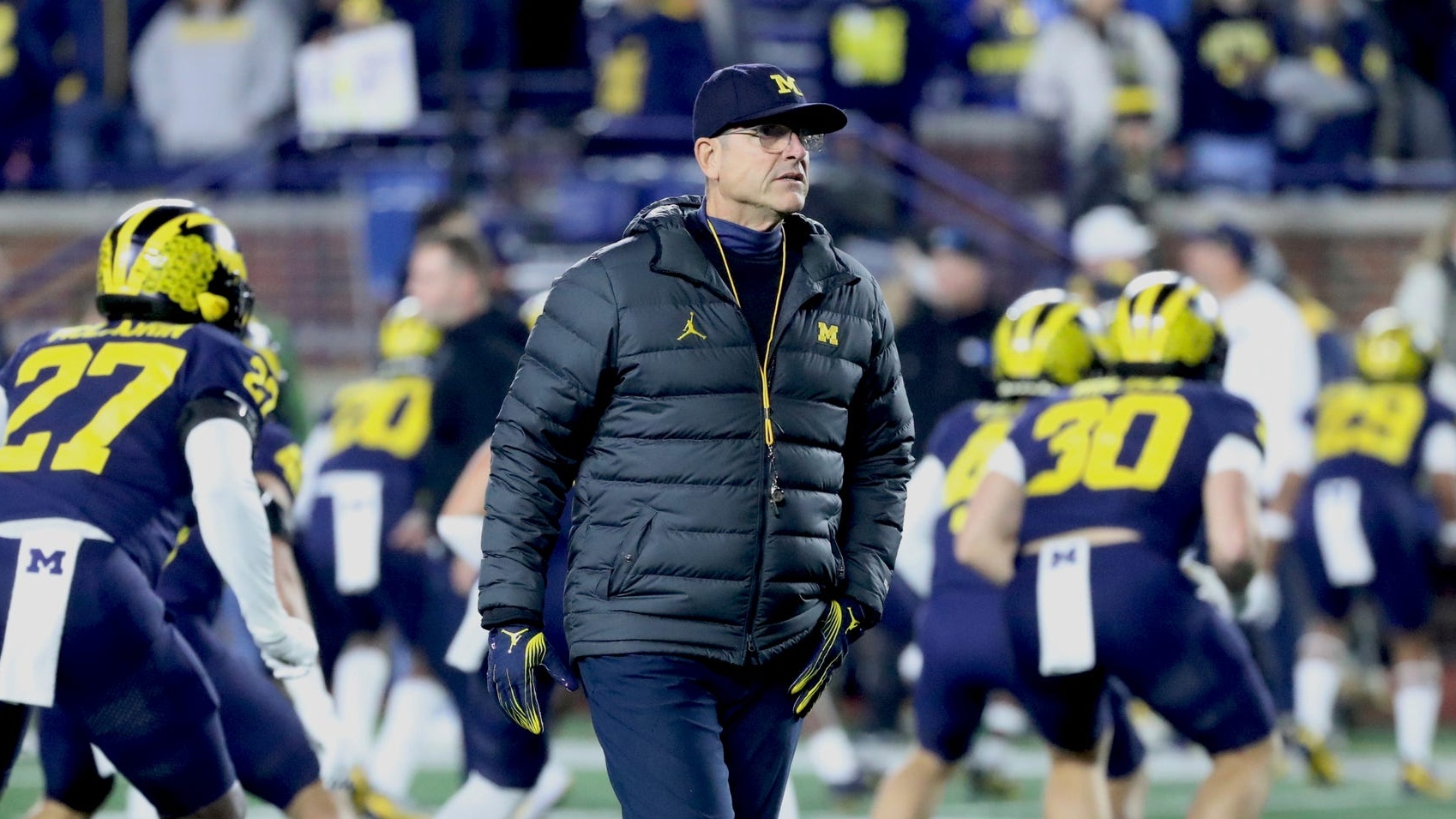Michigan, Texas A&M Embody College Football's Culture of Excess

Forty names, games, teams and minutiae making news in college football, where you do not mess with the Texas Southern tuba players mid-song:
Second Quarter: Heisman watch
First Quarter: Connor Stalions Is the Inevitable Product of an Excessive System
Jimbo Fisher (1) and Connor Stalions (2) would appear to have only one thing in common: they work in college football. Or did. Stalions’s work is now past tense, after resigning from his analyst position at Michigan Friday. And Fisher, the embattled Texas A&M coach, might be past tense fairly soon himself. But the two men stand emblematic of a sport gone mad.
Texas A&M is seriously considering firing Fisher. His underachieving Aggies are 5–4, failing to show dramatic improvement over last year’s 5–7 bust, which followed an underwhelming 8–4 season in 2021. His SEC record is 26–21 at a place with a lot of advantages, which means his firing after six seasons would make sense—if it weren’t for the price tag.
The school is looking at eating nearly $78 million in buyout money it would owe Fisher if he’s fired this season. It’s a preposterous amount, thanks to an irresponsible contract extension in 2021 that added four fully guaranteed years to an already huge deal. That more than doubled the size of his buyout, ballooning it to an unprecedented level in college football.
"Providing the appropriate amount of stability and continuity during this important time is critical as we support our football program at the highest level," Aggies athletic director Ross Bjork said at the time the now-infamous extension was announced.

Spending $78 million to make a coach go away—plus whatever it would take to make his assistants go away, plus the tens of millions it would cost to hire Fisher’s replacement and new staff—is fiscal lunacy. But excess has become so ingrained in college football that it absolutely could happen, and some in the industry won’t bat an eye if it does.
In a decentralized system of organized chaos, the heedless pursuit of wins and profits have made everything justifiable. The Pac-12 (3) was stripped and sold for parts, creating geographic and logistical nightmares for the athletes and trashing tradition, yet the involved leaders just shrugged and pointed to increased revenue. The NCAA’s attempts to enforce bylaws that the member schools voted for are routinely met with obstruction, disdain and outright mockery. Contracts, alliances and loyalties are all disposable.
Every conference is out for itself, with no regard for the sport as a whole, and every school within those conferences is doing the same. There is little honor and no trust. No wonder Stalions, alleged orchestrator of an extensive plot to steal play signals from the rest of the Big Ten and many other top programs, could create a valued role for himself amid a run-amok system that rewards rule breaking and fosters toxic ambition.
Let’s assume that Michigan head coach Jim Harbaugh (4) did not know the depths of what his staff crackpot was up to. One reason why this is a supportable assumption is that Harbaugh, like most coaches at the upper echelon of the sport, has several dozen people on his support staff. Football teams need around 60 to 70 people on staff to keep up with the other teams that have that many, we are told. More justified excess. More outsized self-importance.
But the Michigan coaches clearly knew they had a gifted signal stealer on board in Stalions. Perhaps they all lacked the curiosity to find out how Stalions had perfected his dark art. As one former FBS head coach and current defensive assistant told Sports Illustrated last week, "If I’m a coordinator or assistant coach and we’ve got an ambitious young guy walking around the building saying, ‘I’ve got a bead on their signals,’and I’m the defensive play caller, I’d say, ‘Give it to me.’ I wouldn’t even ask how he got it.”
Asked how much of an advantage that information would be, the coach said, “If I can know it’s a run instead of a pass on even five plays, you absolutely take it. That’s a big help.”
In an atmosphere of overkill, where every insight into even outmanned opponents is sought with missionary zeal, Stalions could flourish to the point of flagrantly reckless behavior. Nothing signifies excess like dressing up as a Central Michigan (5) coach in order to get on the sideline to spy on your in-state rival in the season opener—allegedly. (Central Michigan is now nearly a full week into what should have been a 30-minute investigation of whether anyone knew who the guy on the Chippewas sideline was. If there was a benign explanation, we would have heard it last Tuesday.)
The controversy has sufficiently strained relations with the rest of the Big Ten that conference members have aired their grievances to commissioner Tony Petitti, who may take disciplinary action this week. His challenge is to balance the anger within his league at the apparent breach of sportsmanship (and NCAA bylaws) against the usual ruling influence: money. Millions of dollars could be lost if Michigan misses the College Football Playoff after any sanctions are levied. Whatever path he chooses will be criticized strongly, which is the price of leadership in contentious times.
But the level of conference contempt for Michigan was personified by the blow-by handshake of Harbaugh Saturday night from Purdue coach Ryan Walters (6), who went public last week with information on Stalions buying tickets to Purdue games for his alleged spy network.
This is where we are in college football: spending silly money, fostering ends-justify-the-means urgency, eroding trust one overindulgence at a time. It’s a great sport housed within a flawed system. And the rest of this excessive season seems destined to play out at peak levels of absurdity.

Four for the Playoff
Every week, The Dash decrees what the College Football Playoff should look like if today were Selection Sunday. There were some close calls, but most of the prime contenders made it through another Saturday unscathed.
Rose Bowl: top seed Ohio State (7) vs. fourth seed Michigan (8).
The Buckeyes (9–0) trailed at halftime against a pretty salty Rutgers team. The Buckeyes were saved from ruin by a 93-yard pick-six from Jordan Hancock and 208 all-purpose yards from TreVeyon Henderson, his second straight game with more than 200 yards in that category. Quarterback Kyle McCord wasn’t great, but did have the good sense to target Marvin Harrison Jr. in the red zone for a pair of fourth-quarter touchdowns to pull away. Next up for Ohio State: Michigan State.
The Wolverines (9–0) continue to shrug off their self-induced controversy by dominating all (unranked) comers, thrashing Purdue 41–13 Saturday. The Boilemakers’ touchdown with 18 seconds left gave them the most points scored against Michigan this season. Meanwhile, that was the fifth straight game Michigan has scored more than 40 points., with J.J. McCarthy throwing for a season-high 335 yards. Next up for Michigan: at Penn State, the Wolverines’ first game all season against a ranked opponent.
Sugar Bowl: second seed Florida State (9) vs. third seed Georgia (10).
Missing their top two wide receivers, the Seminoles (9–0) scuffled around against Pittsburgh for more than a half before flashing their customary closing prowess. Two long touchdown drives in the third quarter put away the 24–7 victory, but this performance snapped Florida State’’s 14-game streak of scoring at least 31 points. Even without Keon Coleman and Johnny Wilson, quarterback Jordan Travis threw for a season-high 360 yards. Next up for Florida State: Miami.
After defeating a top-15 opponent, The Dash moved the Bulldogs (9–0) up from fourth last week to third this week. Georgia trailed Missouri in the second half at home Saturday, then scored on four straight possessions to reassert themselves. This was the second straight season that Mizzou has thrown a scare into Georgia, but not been able to finish the deal. Next up for Georgia: MIssissippi, the second of three straight games against ranked opponents.
Also considered: Washington, Oregon, Alabama.
